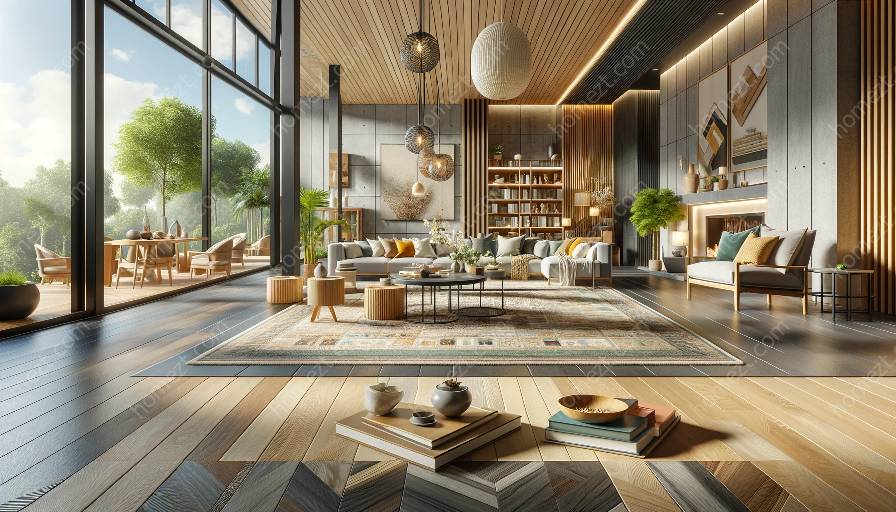When it comes to interior design, the color and texture of flooring play a crucial role in shaping the perception of space. Whether you're designing a commercial space, a residential dwelling, or an office, the choice of flooring materials can significantly influence how large or small a space appears and how it feels to those who use it.
Flooring Options and Materials
The flooring options and materials available in the market today are vast and varied, offering a wide range of colors, textures, patterns, and finishes to choose from. Each type of flooring has its unique characteristics that can impact the perception of space in different ways.
Hardwood Flooring
Hardwood flooring exudes natural warmth and elegance. The color and grain of wood can visually expand or shrink a room, depending on the tones and patterns present in the floorboards. Lighter woods tend to make a space feel more open and airy, while darker woods can create a sense of coziness and intimacy.
Carpeting
Carpeting comes in an array of colors and textures, and it can dramatically alter the look and feel of a space. Light-colored carpets can make a room appear more spacious, especially when coupled with a low-pile option. Conversely, darker and more plush carpets can create a sense of luxury but may visually reduce the perceived size of a room.
Tile and Stone
Tile and stone flooring offer an almost endless selection of colors and patterns. Light-colored tiles can reflect light and make a room feel more open, while large-format tiles can create the illusion of a larger space due to fewer grout lines. Conversely, darker and smaller tiles can contribute to a cozier and more intimate atmosphere.
Laminate and Vinyl
Laminate and vinyl flooring have become increasingly popular due to their durability, affordability, and wide array of designs. Lighter shades of laminate and vinyl can visually enlarge a space, while darker shades can offer a sense of warmth and intimacy.
Impact on Perception of Space
Color and texture have a significant impact on how people perceive the size and atmosphere of a room. Lighter colors, such as white, beige, and light gray, tend to create an airy and expansive feel, making them ideal for smaller spaces. On the other hand, darker colors, such as deep brown, charcoal, and black, can add a sense of intimacy and coziness to larger rooms.
The texture of the flooring also plays a crucial role in shaping the perceived size of a space. Smooth and polished surfaces, such as glossy tiles or polished hardwood, can reflect light and create an illusion of spaciousness. In contrast, textured surfaces, like natural stone or hand-scraped wood, can add depth and character to a room, but they may visually reduce the perceived size.
Interior Design and Styling
When it comes to interior design and styling, the color and texture of the flooring must harmonize with the overall aesthetic of the space. A contemporary, minimalist design may benefit from sleek, light-colored flooring to enhance the sense of openness, while a traditional or rustic interior may be complemented by darker, textured flooring to add warmth and character.
Additionally, the interplay between the flooring and other design elements, such as furnishings, lighting, and wall colors, can greatly influence the perception of space. For example, using a monochromatic color scheme with the flooring, walls, and furniture in similar tones can create a seamless and expansive look, whereas contrasting colors and textures can add visual interest but may affect the perceived size of the room.
Conclusion
In conclusion, the color and texture of flooring materials significantly impact the perception of space. Choosing the right flooring options and materials can help create a more spacious and inviting environment, regardless of the actual size of the room. By understanding the interplay between color, texture, interior design, and styling, individuals can make informed decisions to optimize the visual and atmospheric qualities of any space.


























